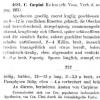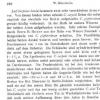
29-12-2025 10:15
Hulda Caroline HolteHello, I found and collected this propoloid ascom

29-12-2025 08:30
Hello.A tiny ascomycete sprouting under Juniperus

29-12-2025 09:38
Oskari VirtanenHi,could anyone help me identify this, I suspect P

28-12-2025 12:08
Margot en Geert VullingsThis possible Karstenia was found on the bark of d

21-12-2025 21:32
Pol DebaenstHello, Garden, Burgweg 19, Veurne, BelgiumOn 10/1

26-12-2025 21:19
Arnold BüschlenPithyella chalaudii Priou. Ist als Bryoparasit in

21-12-2025 09:32
Hello.A tiny ascomycete found embedded in wood in

18-12-2025 21:17
Pol DebaenstThe identification took me to Byssonectria deformi
Bonjour à tous,
I wonder if anyone can help me with this xerotolerant Encoelioid species I found last October on dead, still attached Carpinus branches in the South of England?
The untidy looking apothecia grew quite high up at about 6-10 feet from the ground.
Collection date: 17/10/2014, 51.1618°N 0.1904°W, 59 metres above sea level
Ascospores 17 - 19.3 x 4.3 - 5 µm,
Croziers present, asci tips IKI-
Paraphyses tips often with a light brown encrustation
I have little experience with this group - E.fascicularis looks close, but the guttulation and large spores (and substrate?) of my species should rule that out....
The collection is preserved, so I can provide more data if needed.
Un grand merci pour votre aide,
Nick

I thought this is what I am waiting for so long to see in living state. But the spore measurements do not fit.
First: how large are the apos? I guess from the appearance of the bark at least 5 mm?
Second: the spores look to my taste smaller than you measured, I cannot help. If they are actually as large as you say then this is a mystery. Otherwise I would suggest Encoelia glaberrima.
It would certainly be appreciated by Kadri Pärtel to sequence this fine collection, if you don't mind. I will tell her.
Zotto
Hi Zotto,
Yes, good guess! The apothecia are up to 5mm.
I reduced the size of the photos when I made the collage, back in October. Perhaps this made the spores look smaller? I dug out one of the original photos and put a scale on it.
Yes, of course I'll send it off for sequencing.
Nick
Update: I just checked the material, which seems in good order. About 50% of the spores are now dead. The dead spores differ significantly in size at around 13 - 16.5 x 3 - 4 (sorry about blurry photo).
What do you think about E.carpini? http://www.librifungorum.org/Image.asp?Nav=yes&FirstPage=10273&LastPage=11422&NextPage=10839

I am unaware of any description after Rehm and Kirschstein, actually. Maybe a new record for Britain? But I see there are two records in FRDBI.

Kadri would be very pleased to receive this sample. She wrote me that saw this species only from a 100 years old one from Stockholm. So she asks me to give you here her address, "which is open to receive fresh encoelioids" [or those being not older than a couple of years]:
Kadri Pärtel
Chair of Mycology
Department of Botany
Institute of Ecology and Earth Sciences
University of Tartu
Chemicum
Ravila 14a
50411 Tartu
Estonia
Encoelia carpini is one of the hundred species targeted by RBG Kew's Lost and Found project (which I started working on last week - http://fungi.myspecies.info/content/lost-found-fungi-project ).
We'd definitely be interested in the details of your collection, which could help a lot in searching for further populations of this species. We'd also be very interested in any other collections of this species in Great Britain and Northern Ireland, if anyone else has recently found it but not submitted it to the FRDBI. Or any details that anyone has of this species elsewhere in the world?
We will be doing sequencing later on in the year, but I wouldn't want to poach a specimen from Kadri Pärtel... (maybe a tiny piece?). I've emailed you privately, but thought I'd comment here in case anyone else has any more data on this species.
Cheers,
Brian
Hello Nick,
In my herbarium I have two collections that seem to be identical to your collection. Mine were from the early 1970s from Ham Street (Fagg's Wood) near Ashford in Kent. In both cases the fubgus was growing on dead attached brancches of Carpinus quite high up. Both collections were seen by RWG Dennis. At the time , RWG preferred the name as Encoelia carpini, but were later transferred to E. gleberrima.
Let me know if you want either packet sent to you for comparison
All the best,
Peter
Hi all,
Great!
I'll send some of the collection to Kadri Pärtel and some to Kew (Brian I've replied to your email) I hope someone is succesful in getting a sequence!
Dear Peter, I think I can see the relevant records on FRDBI - I'd love to have a look at the material (it seems to me E.glabberima and E.carpini should be easily seperable by spore size, even in dead material).
Thanks everyone,
Nick
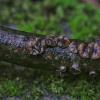
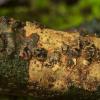
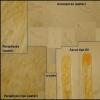
 Live spores October 2014
Live spores October 2014